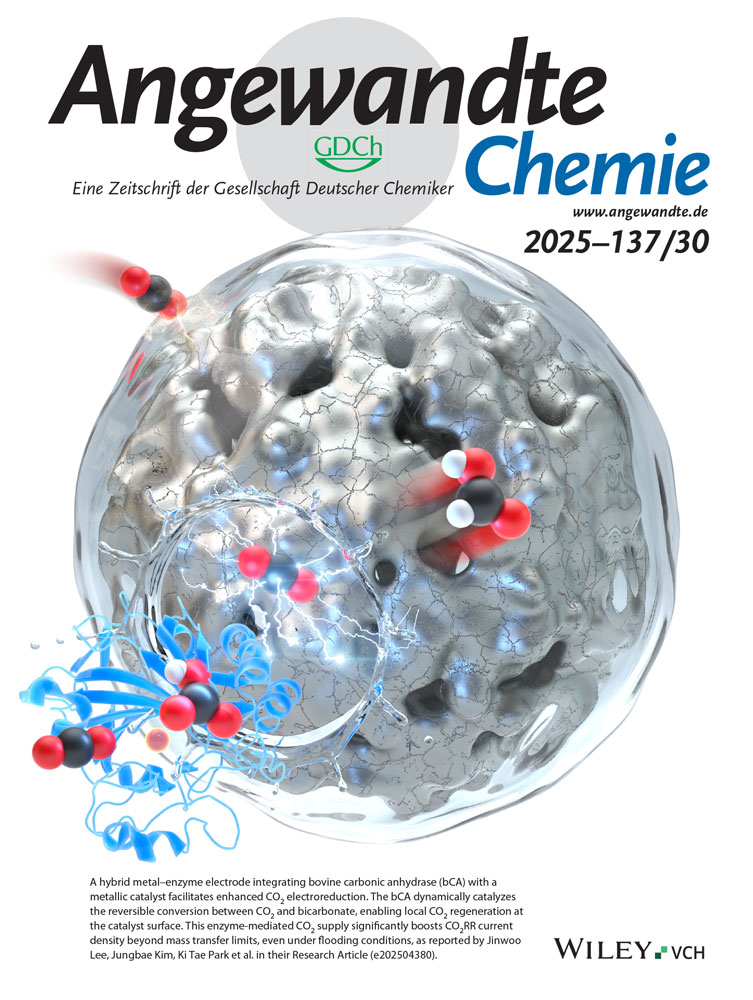A Bifunctional Mechanism for Ethene Dimerization: Catalysis by Rhodium Complexes on Zeolite HY in the Absence of Halides†
We acknowledge DOE Basic Energy Sciences for support (Contract No. FG02-04ER15513) and acknowledge beam time and support of the DOE Division of Materials Sciences for its role in the operation and development of beam line MR-CAT at the Advanced Photon Source at Argonne National Laboratory.
Graphical Abstract
Keine Liganden nötig: Rhodium-Komplexe auf HY-Zeolith als Träger katalysieren die Bildung von C-C-Bindungen über einen neuartigen Mechanismus, der eine Kooperation zwischen der Metallspezies und Brønsted-Säurezentren des Zeolithträgers umfasst (siehe Bild). Der Katalysator agiert in Abwesenheit von Liganden wie Halogeniden und zeigt eine hohe Selektivität für n-Butene, sogar in einem Überschuss an H2.





